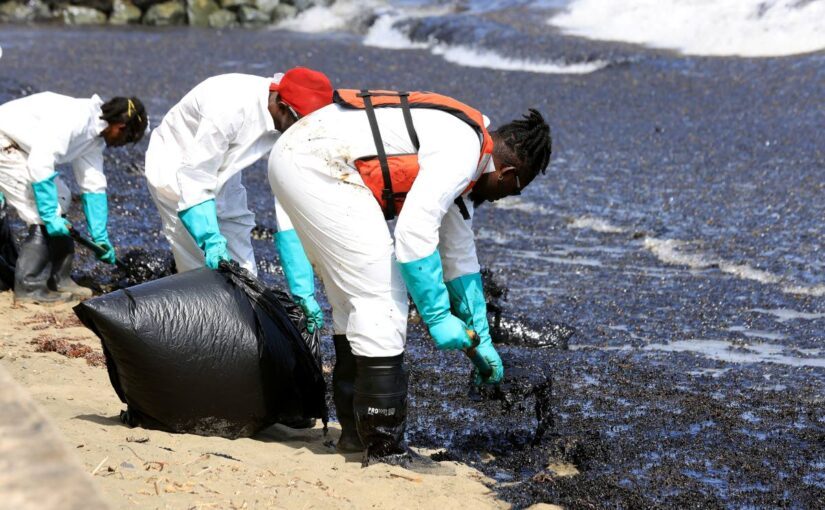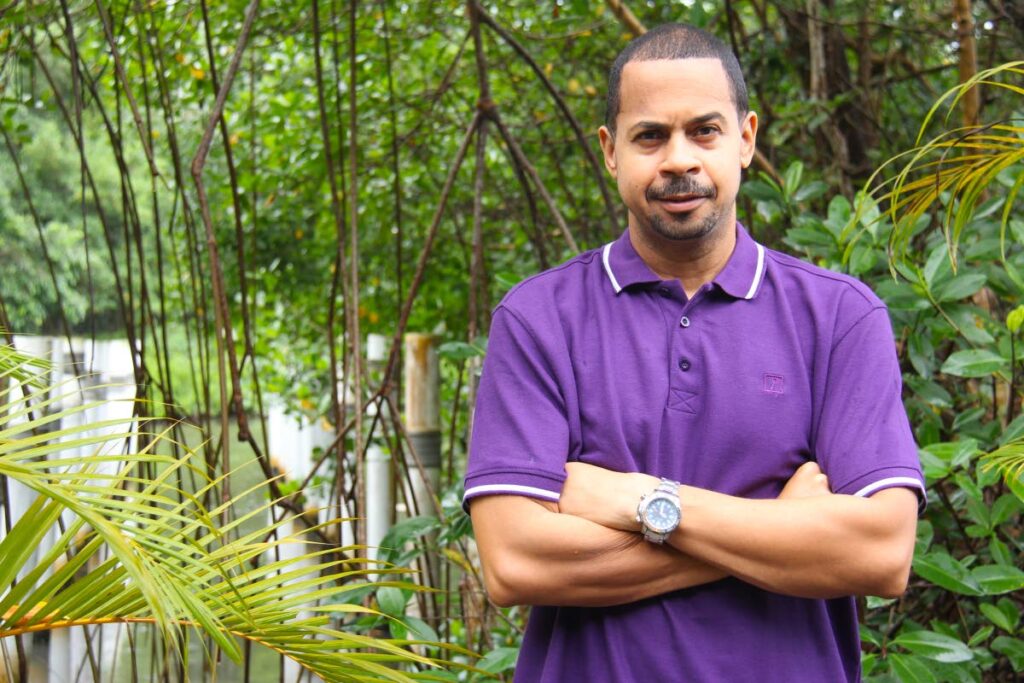THA: Tests show oil-spill waste stored safely
Written by Janelle De Souza on November 8, 2024

THE Tobago House of Assembly (THA) says the storage of the oil-spill waste at Studley Park Landfill has not had a visible impact on the surrounding environment, and the Ministry of Energy and Energy Industries has agreed to arrange for the permanent disposal of the waste.
Speaking at a THA press briefing at the Office of the Chief Secretary, Hochoy Charles Administrative Complex, Calder Hall on November 7, Linford Beckles, chairman of the THA multi-disciplinary oil-spill management committee, said there was always a possibility of overflow or leakage, but consistent monitoring of the water quality in the stream in Studley Park and the Barbados Bay area showed no risks to any major water bodies.
Giving a recap of the event, Tobago Emergency Management Agency (TEMA) director Allan Stewart recalled the “horrific event” on February 7 when the Gulfstream oil tanker overturned in Tobago waters, having an ecological and environmental impact on 15 kilometres of coastline from Scarborough to Petit Trou Lagoon.
“Probably it may be imperative for me to bring into context that this event happened the Thursday before our national Carnival, and it poses a significant amount of stress in terms of its impact and the mobilisation of resources that was not readily available on the island of Tobago.
“Being separated by 70 miles of water from our sister isle, a number of these resources had to make their way to Tobago and that also poses a certain significant amount of challenges as we went forward.”
Stewart said the oil deposits that were cleaned up had to be placed somewhere, and, after consultations, the Studley Park Landfill was chosen to temporarily store the oil waste. Cells were dug and lined, and dykes were built around the cells to mitigate leaking risks.
Faith BYisrael, THA deputy chief secretary and Secretary of Health, Wellness and Social Protection, interjected, stressing that the storage of the oil spill waste at the landfill was always a short-term solution and they were aware a long-term solution had to be found.
She said the press briefing was necessary to refute claims in a Trinidad Express article on November 3, which said the disposal of the oil using pits at the Studley Park Landfill could be posing a threat to the environment owing to oil spilling over the pits and into soil. She said the THA realised it had not been keeping the wider public informed of all the work being done.
Beckles said the THA used a multi-parameter sonde, which was also used by the US Environmental Protection Agency, to monitor water quality, to monitor freshwater sources as well as the coastline in the Barbados Bay area. He said the latest readings were taken on November 6 at 9.30 am and they were consistent with readings taken before the oil spill, showing there was no chemical or other impact associated with the storage of the oil waste.
There was also no petrochemical scent in the area, no visible sheen in the water and the wildlife was active.
“And of course, we consistently do the visual inspection to ensure that you don’t have any dead fish, you don’t have any dead crayfish and so on, those kinds of things.”
He added that he and his personnel also visited the site during and after heavy rainfall to look for evidence of spillage, but believed water contamination was not a big concern.
“The material that is there is essentially bunker C fuel. Bunker C fuel is really a very heavy fuel oil. One of the things that some may be concerned about is toxicity. One of the things I want to mention with respect to that, is that the constituent chemical compounds in bunker C fuel, not very many of them are actually water soluble. So when you are thinking about toxicity associated with aquatic environments and so on, there is a very low concern about toxicity of bunker C fuel in aquatic environments compared to significantly lighter fuels.
“So that’s not one of the big concerns that we actually have. If there is any toxicity, that toxicity is associated with bioaccumulation, so you essentially have to ingest it and that kind of thing.”
Beckles said the Ministry of Energy approached the THA in May and offered to take over the responsibility for the final disposal of the oil waste at Studley Park. The THA agreed in June and, in a letter dated August 6, the ministry accepted the responsibility. It said it was looking at different solutions and the THA would be informed when a decision was made. On November 1, the ministry’s agent, the National Gas Company, requested formal permission to enter the site and start clean-up operations.
“Of course, the very first stage in that process is really the getting a certificate of environmental clearance (CEC). So that was the basis of their immediate request. And this is a specific requirement of the CEC process; when you ask to operate in an area that you do not have management control over, you must have express permission from the entity that has management control and so on.”
He said the THA was very happy for the ministry’s intervention and would continue to work with the ministry.
BYisrael added that one impact of storing the oil waste at the landfill was there was less space to store the usual garbage produced by the island’s inhabitants. She thanked the public health employees who operated the landfill for preparing the site and finding the space for the oil waste, as well as managing and disposing of the garbage.
According to a post on his social media pages, Energy Minister Stuart Young was in London making submissions at the International Oil Pollution Compensation (IOPC) Fund meeting on behalf of TT on November 7.
In May, Young led a TT delegation to the IOPC Fund meeting in London where he persuaded IOPC officials that the oil spill should be covered by the fund. The IOPC director was authorised to make payment of compensation based on the claims and costs arising from the incident.
Young previously said the November visit was “to continue that discourse and to provide them with the further updates on the processing of our payment.”
The THA received $50 million in the mid-year review in May to help with the oil-spill clean-up and, on October 16, speaking at the Standing Finance Committee of the House of Representatives, Young said the government and the THA could expect reimbursement for expenditure incurred as a result of the oil spill.
The post THA: Tests show oil-spill waste stored safely appeared first on Trinidad and Tobago Newsday.




